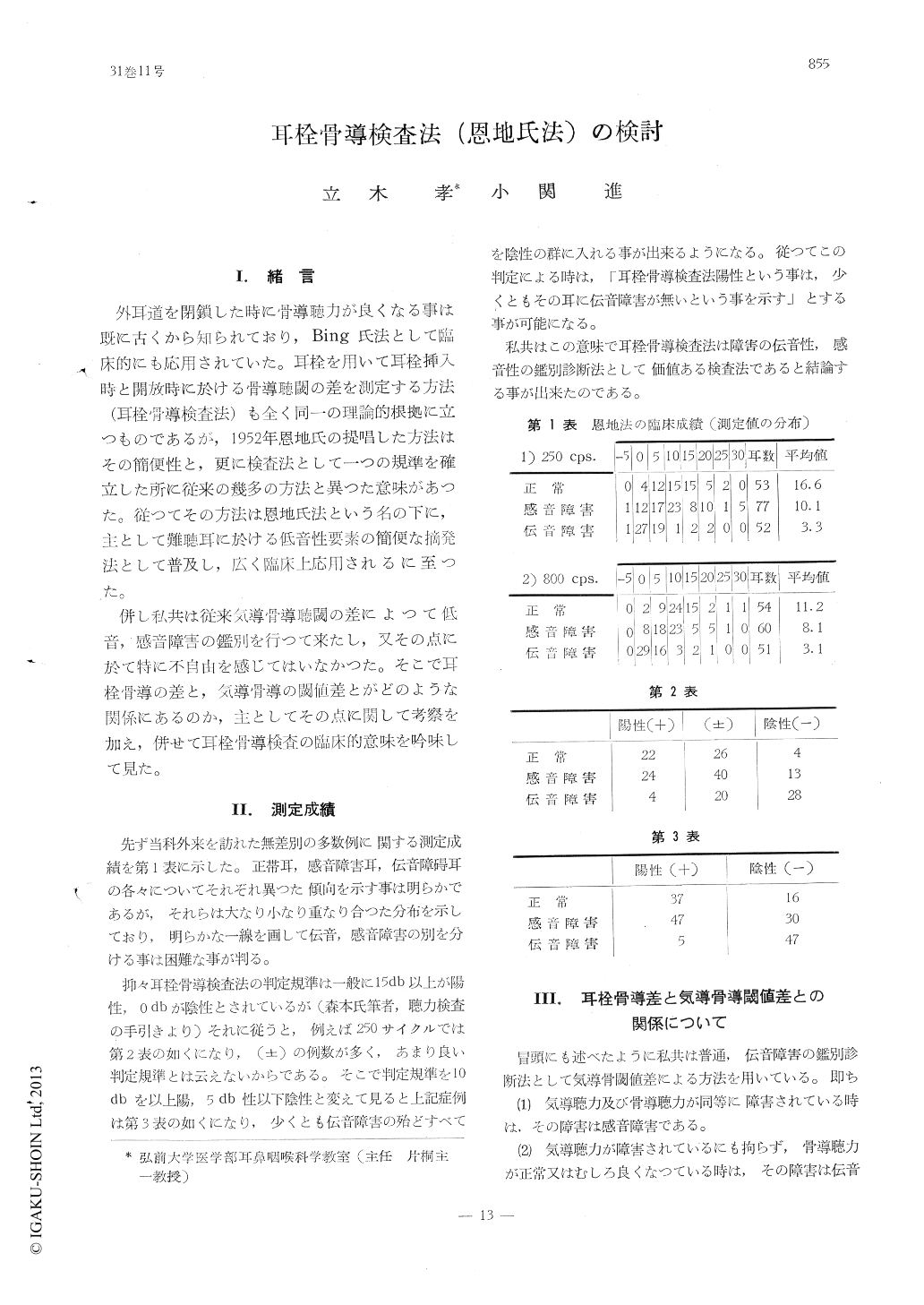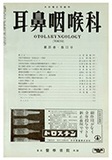- 有料閲覧
- 文献概要
- 1ページ目
I.緒言
外耳道を閉鎖した時に骨導聴力が良くなる事は既に古くから知られており,Bing氏法として臨床的にも応用されていた。耳栓を用いて耳栓挿入時と開放時に於ける骨導聴閾の差を測定する方法(耳栓骨導検査法)も全く同一の理論的根拠に立つものであるか,1952年恩地氏の提唱した方法はその簡便性と,更に検査法として一つの規準を確立した所に従来の幾多の方法と異つた意味があつた。従つてその方法は恩地氏法という名の下に,主として難聴耳に於ける低音性要素の簡便な摘発法として普及し,広く臨床上応用されるに至つた。
併し私共は従来気導骨導聴閾の差によつて低音,感音障害の鑑別を行つて来たし,又その点に於て特に不自山を感じてはいなかつた。そこで耳栓骨導の差と,気導骨導の閥値差とがどのような関係にあるのか,主としてその点に関して考察を加え,併せて耳栓骨導検査の臨床的意味を吟味して見た。
The clinical significance of the method that employs bone conduction taken with an ear stopple as the basis of the test is investi ga-ted, particularly, the relation of the thres-hold difference between the air-and bone-con-duction from the standpoint of the method that differenciates the disturbances that may involve the conductive system or the nerve is noted. It is found that, though the present method is endowed with certain points of merit, as a diagnostic means, it has no ad-vantage over the method that employs the difference in threshold between air- and bone- conduction ; it is less efficient in ma-king quanititative determinations.

Copyright © 1959, Igaku-Shoin Ltd. All rights reserved.


